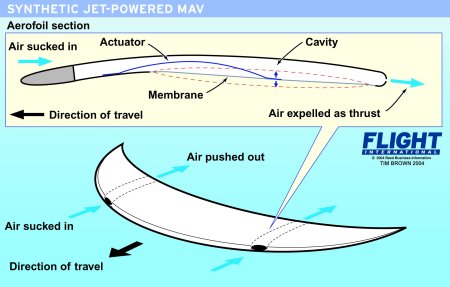A synthetic jet engine is a better propulsion system for a micro air vehicle (MAV) than a propeller, research at the University of Bath in the UK has determined.
Propellers generate high forces on an MAV's structure because they are often as large as the vehicle, while small propellers cannot generate sufficient thrust. However, the synthetic jet, which uses an electrically powered oscillating membrane to suck air in and push it out, is lighter, not as mechanically complex and improves airflow over the vehicle.
"We found that the jet improves airflow over the wing through its operation. The jet would be incorporated into the MAV's superstructure, which would be a more-elliptical flying wing," says aerospace engineering professor Ismet Gursul, project leader for this stage of the research, which ends next month.
The airflow study and engine testing was conducted in a windtunnel. A prototype hollow wing, with the engine built in, spanned the width of the tunnel. This meant that only the engine's performance and interaction with the wing's airflow was measured. The next step is to investigate the full wing shape and its tip vortex behaviour.

ROB COPPINGER/ LONDON
Source: Flight International























